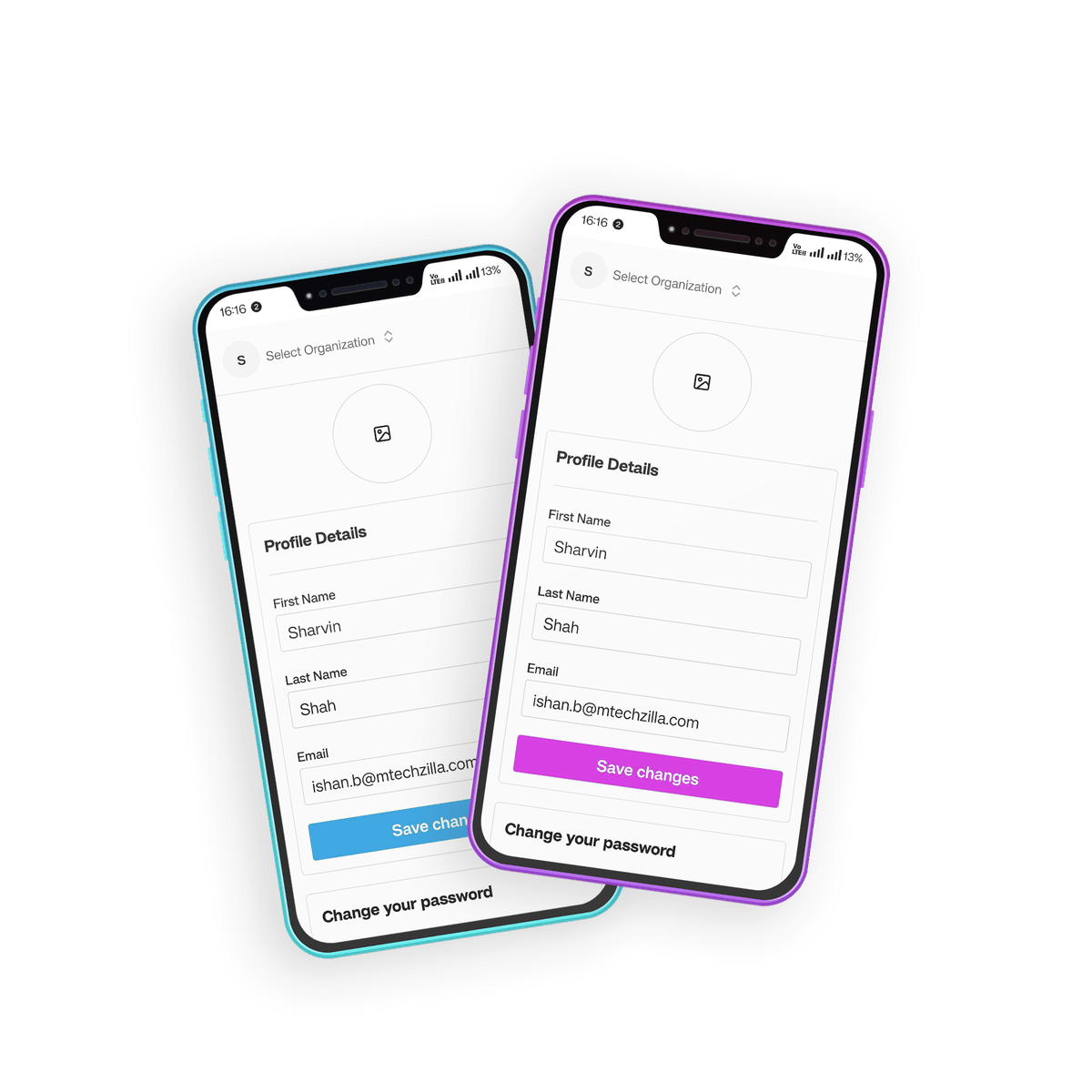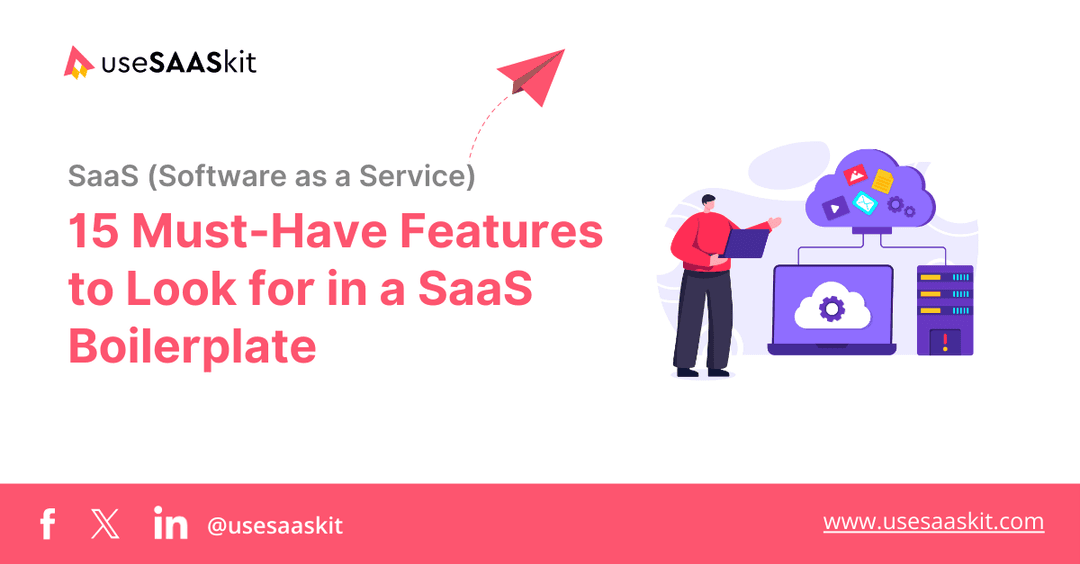Friday, 27 Dec 2024
7 min read
SEO Strategies for Next.js in SaaS Applications

There is hardly any doubt that Search Engine Optimisation or SEO has become the backbone for online visibility. And as the SaaS applications keep their fast pace with Next.js, it will help drive your web presence. Combining the dynamic abilities of Next.js with phenomenal SEO techniques, SaaS industries create high-performing websites that rank better, super-load faster, and convert much more effectively.
So, in this blog, we'll deep dive into practical actions that will optimize SEO focused towards Next.js in SaaS applications. From the technical aspect optimisation to taking advantage of Next.js features toward better performance, we cover it all here.
Table of Contents
- Introduction to Next.js Templates for SaaS Applications
- The Importance of SEO in SaaS
- Technical SEO Strategies for Next.js Templates
- Content Optimisation for SaaS Websites
- Performance Optimisation
- Mobile-First Design and Optimisation
- Structured Data and Schema Markup
- Leveraging useSAASkit for Next.js SaaS Templates
- Conclusion
- FAQs
Introduction to Next.js Templates for SaaS Applications
Next.js is one of the most powerful frameworks based on React that serves fast and scalable applications that have built-in SEO. SaaS startups use Next.js templates extensively and quickly develop their product base. The template comes with some ready-to-implement reusable parts such as authentication, billing, admin tools, and marketing pages for those eager to bring their products to market fast.
But the Next.js template is only half the journey.
To make it work well, a SaaS business needs to ensure the websites are search engine optimised. This requires technical SEO, content strategies, and performance improvements for Next.js.
The Importance of SEO in SaaS
Visibility is everything in the SaaS space. There can be multiple benefits with an optimised website. It can:
- Drive Organic Traffic: Steady increase in ranks on search engines, which will treat it as a potential customer.
- Build Credibility: Will bring the level of trust with the users since it will appear on the first page of search results.
- Increase Conversions: Whether it's the amount of visitors or the activity on better ranks, optimised landing pages naturally receive conversions.
SaaS does not favour the traditional systems that can be called sales and marketing; therefore, SEO is all about helping the application be visible in front of the right audience at the right time under competition.
Technical SEO Strategies for Next.js Templates

Server-Side Rendering (SSR)
One feature that Next.js really stands out with is server-side rendering (SSR). That is where your content is rendered on the server before it gets sent to the browser. This is actually quite important for search engines, considering they can find content easier this way. Dynamic content, for example, user-specific dashboards, should be specifically dealt with so that they can avoid duplication problems.
Static Site Generation (SSG)
With Static Site Generation, you can pre-render the pages at the time of build. This is mainly a feature for content-heavy SaaS apps such as blogs or even marketing pages. Use SSG on pages that are not updated frequently to improve loading times and ensure performance remains at its peak.
Image Optimisation
Next.js has a very clever built-in Image Optimisation API through which you can serve images in the most efficient formats (e.g. WebP). Use responsive image tags and lazy load them to make everything more effective regarding page speed, arguably the most important factor both for user experience and SEO.
Content Optimisation for SaaS Websites
Keyword Research
Start identifying keywords used by an audience to find out how. For example, one might check words on such services as SEMrush, ahrefs, or Google Keyword Planner, and find those with high volume and low competition. For SaaS-specific words, you might go with ["productivity SaaS tools"], ["Next.js templates"], or ["project management SaaS].
Creating High-Quality Content
Content is king. Produce these value-driven blog articles, case studies, and even tutorials-really helpful things that touch on people's pain. For example, how to optimize applications using Next.js would apply to developers and decision-makers alike.
Optimizing Metadata
All your pages should have distinct title tags, meta descriptions, as well as header tags. Inject primary keywords organically to improve the click-through rates (CTR) and ranking of the pages. For instance, just this title, "SEO Recommendations for SaaS Web Solutions Built on Next.js," is quite descriptive and keyword-rich.
Performance Optimisation
Page Speed Insights
Websites that load quickly get preferential treatment from Google. You may measure the performance of your Next.js app using tools such as Google PageSpeed Insights or Lighthouse and locate possible bottlenecks. Work to reduce JavaScript payload sizes, enable compression, and improve server response times.
Caching Strategies
Next.js supports Incremental Static Regeneration (ISR). Consequently, you can update static content because the app doesn't require rebuilding altogether. The content remains the most up-to-date for users without comprising performance.
Mobile-First Design and Optimisation
Today's over half of Internet traffic is mobilised, and this change is creating a shift in behavior so real that a mobile-first approach is not just important; it is an inevitable feature for every business wanting to succeed online. As demand increases for seamless mobile experiences, optimally designing your SaaS site for mobile users becomes less of a feature and more of a necessity. Responsive design in Next.js allows you to build a site that can flow directly from any screen, providing smooth, seamless experiences across devices. Mobile-friendliness has really done its part in improving user experience, as much as it betters the engagement, conversion, and even SEO ranking.
Make your SaaS site truly mobile friendly: begin with basics; tap-friendly targets should be used to allow the user to easily interact with the page without the challenge of friction. Adopt legible fonts with text dimension small enough that they will still be clear when presented on small screens. Place the main content just above the fold, where it can convey important information without scrolling for instant access. Next.js implements those with its tools and server-side rendering: adds value to easy implementation of those aspects. Responsive designs and intuitive user experiences are what will make your SaaS unique. Make your site that engaging and functional, on any device at once.
Structured Data and Schema Markup
Schema markups enhance the visibility of your SaaS website and also make it easier for a search engine to understand your web content. In most cases, search engines will display for the user's query some additional features within the search results using rich snippets. Therefore, it increases the attractiveness of your website content to potential customers. Critical schema areas for most SaaS businesses are:
- Pricing Information: Make very clear mention of the subscription tiers, discounts, or trial periods. This should help users very quickly understand offerings.
- Product Descriptions: Feature what makes your software unique and some outstanding features to attract the right audience.
- Reviews and Ratings: Have the audience read the feedback about the users to trust and believe the new customers.
- FAQs: The answers to common questions would be visible direct on the search results to lessen the friction within the customer journey.
Create an Easy Integration with Next.js and Validation Tools
Because it is adaptable and flexible, Next.js enables easy inclusion of JSON-LD schema markup. Instead, embed structured data directly into your pages that search engines like Google can parse and present your information. Start by defining the JSON-LD objects for important pages, such as pricing, product, and FAQ, and then set up dynamic population using Next.js server-side rendering.
After implementing schema markup, it is necessary to validate your schema markup to avoid errors. You can utilize some validation tools like Google's Structured Data Testing Tool or Rich Results Test to ensure that everything has been set properly and optimize your chances of appearing in enhanced search results.
Schema markup can make your SaaS site shine above all other crowded search results with a better user experience, user engagement, and conversion.
Leveraging UseSAASkit for Next.js SaaS Templates

UseSAASkit simplifies SaaS application development with its robust Next.js boilerplate. Here’s how it can help:
- AI-Ready Features: Integrate cutting-edge AI capabilities effortlessly.
- Pre-Built Components: Save time with ready-to-use templates for authentication, billing, admin tools, and more.
- SEO-Friendly Structure: UseSAASkit’s optimised codebase ensures faster load times and better rankings.
- Scalability: Support for multi-organization (RBAC) setups ensures your application grows with your business.
By starting with UseSAASkit, you’ll have a strong foundation for building a high-performing, SEO-optimized SaaS application that stands out in a competitive market.
Conclusion
SEO is the heart and blood of any SaaS app. Your product thus reaches the appropriate viewership by a perfect SEO. Organic traffic can be driven through your site when well optimised, ensure better visibility, and build trust among the users. Next.js templates can be adapted to develop SEO-friendly websites, thanks to server-side rendering, fast load times, and brilliant performance metrics.
By addressing technical SEO, performance optimisation, and implementing structured data, one can transform one's site into a coveted destination for search engines and hence a good source of quality leads. Such applicability of strategies is not traffic only because the methodologies transform visitors into repeat customers.
Build Smarter with UseSAASkit
Next.js templates, however, are a good start, and this is where UseSAASkit takes a leap forward to introduce an all-in-one Next.js boilerplate to tailor to SaaS startups. UseSAASkit boosts speed and scalability, enabling you to ultrafast launch your SaaS business and also ensure that it is optimised for SEO from the ground up. Why build a mere website when you can build smartly? With pre-integrated SEO tools and performance boosters, UseSAASkit ensures that you rank better, reach the right audience, and drive meaningful results with your product. Whether getting started or scaling up, UseSAASkit is all you need to build a high-performance SaaS site.
Frequently Asked Questions
Why is SEO important for SaaS websites?
SEO drives organic traffic, builds credibility, and increases conversions, making it crucial for the growth of SaaS businesses.
How does Next.js improve SEO?
Next.js supports features like SSR, SSG, and image optimisation, which enhance website performance and search engine rankings.
What is UseSAASkit, and how can it help?
UseSAASkit is a Next.js boilerplate that includes pre-built components like billing, authentication, and AI features, helping SaaS startups launch faster.
How can I optimize my SaaS website for mobile users?
Focus on responsive design, optimize touch targets, and prioritise content loading for a seamless mobile experience.
What tools can I use for SEO on Next.js websites?
Tools like Google PageSpeed Insights, Lighthouse, SEMrush, and structured data testing tools are excellent for optimising Next.js applications.



